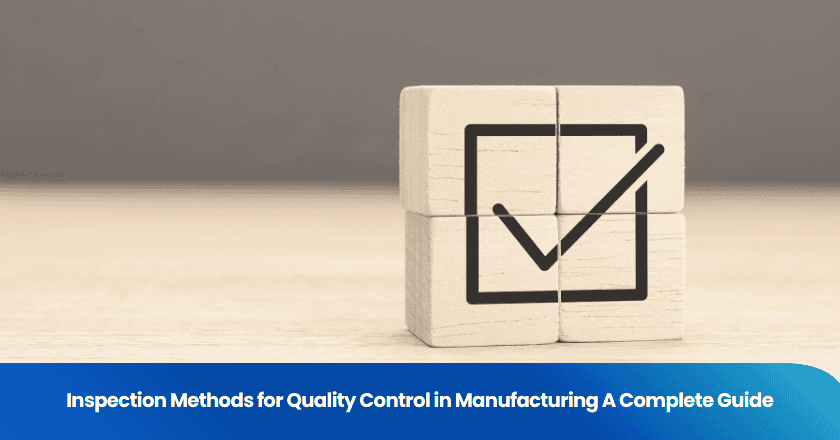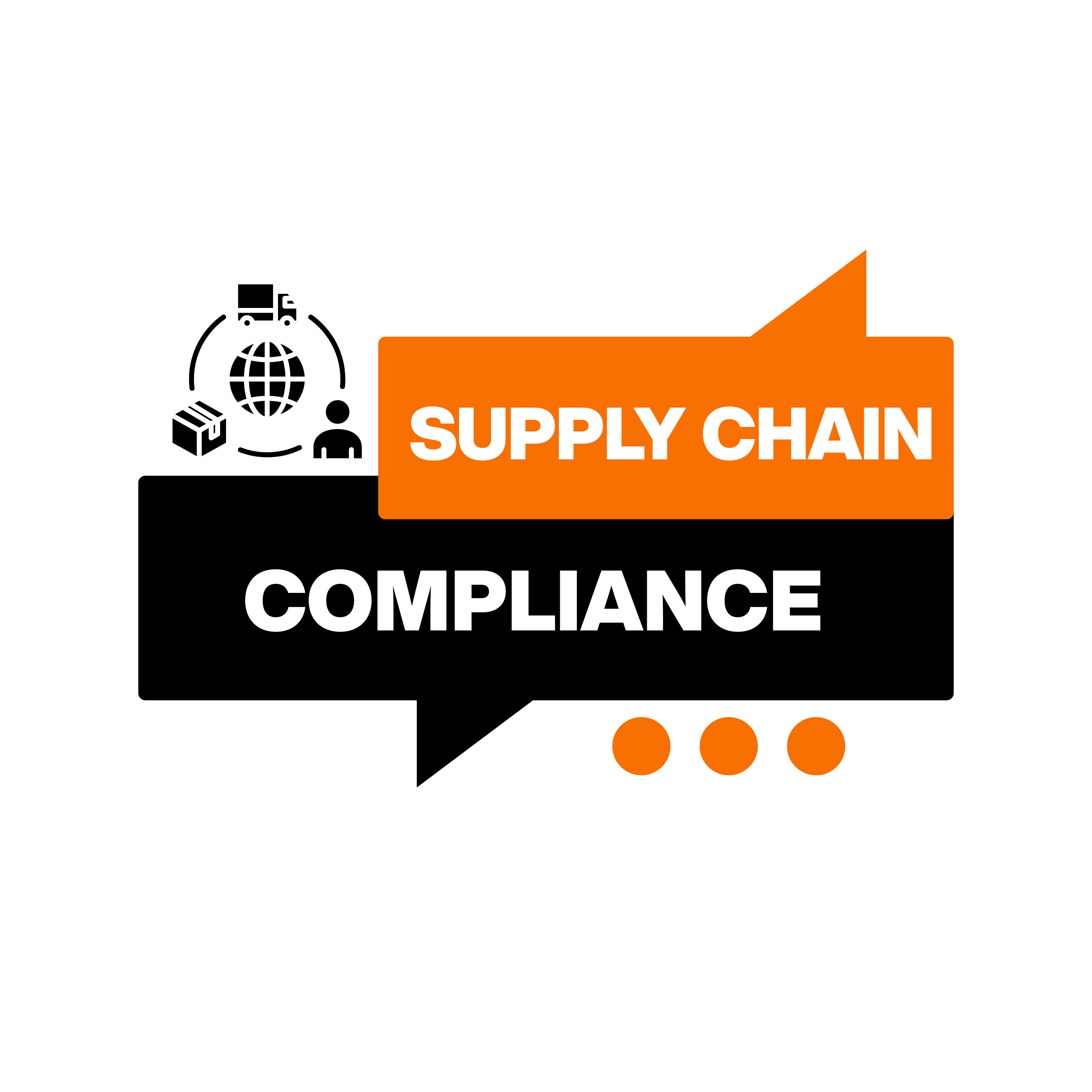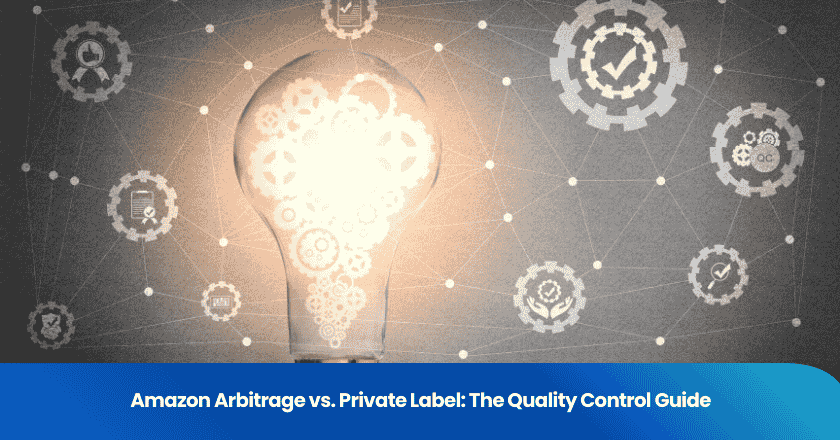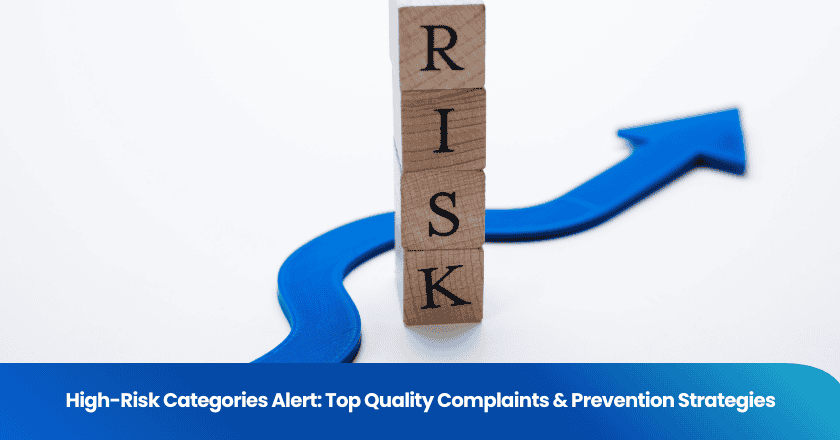
You can choose from several main inspection methods for quality control in manufacturing. Common approaches include visual checks, statistical process control, sampling, automated testing, and employee training. Each inspection method helps you catch defects, improve product consistency, and boost operational efficiency. When you use automated or systematic inspections, you reduce human error and ensure high product integrity. Consider your production needs and think about which inspection method will best align with your process.
Key Takeaways
- Quality inspection is essential for ensuring product excellence. It helps detect defects early, maintain consistency, and boost customer satisfaction.
- Different inspection methods serve unique purposes. Choose between visual checks, automated testing, and statistical methods based on your production needs.
- Implementing a structured quality inspection process can reduce waste and lower production costs. Follow steps like documentation review, visual inspection, and sampling.
- Automated and AI-driven inspection technologies enhance accuracy and efficiency. They help identify defects that manual checks might miss, ensuring high-quality standards.
- Regular training for inspectors and continuous improvement processes strengthen your quality control efforts. This leads to better defect detection and higher product quality.
Quality Inspection in Manufacturing
Definition and Role
You play a vital role in ensuring product excellence when you implement quality inspection in your manufacturing process. Quality inspection means measuring, examining, and testing products, parts, or processes against specific requirements or standards. According to ISO 9001, quality inspection focuses on verifying that materials, components, and finished products meet required standards. You use quality inspection to check compliance with specifications and to evaluate a product’s functionality and performance. This process stands apart from quality assurance and quality control because it centers on hands-on verification activities.
When you use quality inspection, you help detect and correct errors before products reach your customers. You maintain product consistency by ensuring each item meets the same standards. Early detection of defects through quality inspection reduces rework and waste, which lowers production costs. You also boost customer satisfaction because higher quality products with fewer defects lead to happier customers and long-term loyalty. Quality inspection helps you stay competitive by delivering reliable products that meet market expectations.
Tip: Consistent quality inspection not only improves your product but also strengthens your brand reputation in the marketplace.
Quality Control vs. Quality Assurance
You often hear the terms quality control and quality assurance used together, but they serve different purposes in manufacturing. Quality assurance takes a proactive approach. You design robust processes, establish standard operating procedures, and implement controls before production begins. Quality control, on the other hand, is reactive. You identify and address defects after they occur by using quality inspection, testing, and evaluation.
Here’s a quick comparison:
| Aspect | Quality Assurance (QA) | Quality Control (QC) |
|---|---|---|
| Approach | Proactive—prevents issues before production | Reactive—identifies defects after production |
| Focus | Process-focused—ensures systems create quality | Product-focused—checks if products meet standards |
| Purpose | Prevention—uses processes and training to avoid defects | Detection—finds defects through quality inspection |
| Responsibility | Organization-wide—involves all staff | Specialized—handled by a dedicated quality team |
You need both quality assurance and quality control to achieve the highest standards. Quality assurance sets the foundation, while quality control, through quality inspection, ensures your products meet those standards before reaching your customers.
Types of Quality Inspection
Pre-Production Inspection
You start your quality inspection process before manufacturing begins. Pre-production inspection checks raw materials, components, and factory readiness. This step helps you catch defects early and ensures suppliers meet your standards. By verifying compliance with specifications, you prevent costly mistakes and delays.
In-Process Quality Inspection
You conduct in-process quality inspection while production is underway. This method allows you to monitor critical stages and address issues as they arise. You check for surface defects, measure dimensions, and test functionality. By inspecting during production, you maintain consistent quality and reduce waste.
Final and Pre-Shipment Inspection
You perform final and pre-shipment quality inspection when goods are ready for delivery. This step verifies that products meet customer specifications and regulatory standards. You check dimensions, materials, construction, colors, labeling, and overall appearance. This inspection ensures only compliant and high-quality products reach your customers.
- Ensures products meet legal and safety requirements
- Verifies correct quantity and packaging
- Confirms accurate destination and documentation
Note: Final and pre-shipment inspections protect your business reputation by reducing the risk of defective goods entering the market.
Loading and Unloading Supervision
You use loading and unloading supervision to maintain product integrity during transportation. Proper handling and secure loading prevent damage and ensure safety. You check that cargo is lashed correctly and labeled accurately to avoid misrouting. These steps help you deliver products in perfect condition and comply with safety standards.
By applying these types of quality inspection, you strengthen your manufacturing process and deliver reliable products.
Inspection Methods
Visual Inspection Method
You often rely on the visual inspection method as the first line of defense in manufacturing. This approach involves trained inspectors examining products for surface defects, incorrect assembly, or cosmetic flaws. You can quickly identify issues such as scratches, dents, or color mismatches. Visual inspection plays a crucial role in quality control methods because it provides immediate feedback and helps you maintain regulatory compliance.
You benefit from visual inspection when you need a flexible and cost-effective solution for small batches or custom products. However, you must recognize that this inspection method may miss internal or microscopic defects. To maximize effectiveness, you should combine visual checks with other quality control methods.
Tip: Regular training for inspectors reduces human error and increases the reliability of your visual inspection method.
Measurement and Testing Methods
You use measurement and testing methods to verify that products meet precise specifications. These methods involve tools such as calipers, micrometers, gauges, and advanced testing equipment. You measure dimensions, weight, hardness, and other critical parameters. This inspection method ensures that each product aligns with design requirements and industry standards.
You can enhance your quality control methods by implementing the following practices:
- Track key performance indicators (KPIs) like defect rates and throughput to monitor quality trends.
- Provide regular employee training so your team follows procedures and spots issues early.
- Conduct end-of-line testing to confirm products meet standards before shipment.
- Use real-time monitoring systems for immediate feedback and rapid corrections.
- Inspect incoming materials to prevent defects from subpar supplies.
Measurement and testing methods excel in high-volume manufacturing. You achieve consistent results and reduce the risk of defective products reaching your customers. This inspection method also supports continuous improvement by highlighting areas for process optimization.
Statistical Quality Control Methods
You apply statistical quality control methods to monitor and control your manufacturing processes. These methods use data analysis to detect trends, identify variations, and prevent defects before they occur. You can implement several proven approaches to strengthen your inspection method:
- Six Sigma: You focus on defect prevention and strive for no more than 3.4 defects per million opportunities.
- DMAIC Process: You follow the steps of Define, Measure, Analyze, Improve, and Control to systematically reduce defects.
- Control Charts: You use these tools to track process variations over time and maintain consistent quality.
Statistical quality control methods help you make data-driven decisions. You can identify root causes of defects and implement targeted improvements. This inspection method is especially effective in large-scale production environments where consistency and efficiency matter most.
Note: Statistical quality control methods not only reduce defects but also support long-term process stability.
100% Inspection Method
You may choose the 100% inspection method when you require absolute assurance that every product meets your standards. In this approach, you inspect every single item rather than relying on sampling. You use this method for critical components, high-value products, or when safety is paramount.
The 100% inspection method offers maximum defect detection but can be labor-intensive and time-consuming. You must balance the need for thoroughness with production efficiency. Automated systems can help you scale this inspection method for high-volume operations.
When you select an inspection method, consider factors such as product type, production volume, inspection environment, and specific quality standards. You ensure the right balance between accuracy, cost, and efficiency by aligning your inspection method with your manufacturing goals.
- The type of product
- Production volume
- Inspection environment
- Specific quality standards
Callout: Choosing the right inspection method strengthens your quality control methods and protects your reputation in the marketplace.
Automated and Advanced Inspection
Machine Vision and Robotics
You can transform your quality control process by adopting machine vision and robotics. These technologies automate many inspection tasks that once required manual labor. Machine vision systems use cameras and sensors to capture detailed images of products. Robotics handle repetitive movements with precision. This combination allows you to achieve high-speed, accurate inspections across your production line.
- Machine vision systems operate tirelessly, maintaining consistent performance without fatigue.
- Automated visual systems increase production efficiency, freeing your team to focus on higher-value tasks.
- You reduce the risk of defects going unnoticed because these systems enhance inspection accuracy.
Automated quality inspection with machine vision ensures every product receives attention, even in fast-paced environments. You minimize bottlenecks and improve attention to detail, which is essential when you must meet strict specifications. Real-time monitoring helps you maintain high standards, even as production complexity grows.
Tip: Automated quality inspection reduces costs and waste while ensuring compliance with industry standards.
AI-Driven Quality Inspection
You can further improve your inspection process by integrating AI-driven solutions. AI systems use machine learning and computer vision to detect defects more accurately and quickly than traditional methods. Automated quality inspection powered by AI identifies complex patterns in real time, which manual checks may miss.
- AI-driven inspections help you meet regulatory standards by detecting defects early in production.
- You benefit from continuous learning, as AI systems refine their detection capabilities over time.
- Automated quality inspection in automotive and electronics manufacturing leads to significant cost reductions and improved product quality.
- AI accelerates the inspection process, minimizing production interruptions and providing real-time records for long-term quality management.
- Deep learning enables AI to process complex visual data, identifying subtle differences that human inspectors might overlook.
Automated quality inspection with AI enhances detection accuracy and consistency. You can identify subtle defects that may go unnoticed by humans. This approach supports your goal of maintaining high-quality standards, even as your production demands increase.
Quality Inspection Process
Steps in the Inspection Process
You need a structured approach to maintain effective quality control throughout your manufacturing processes. The quality inspection process consists of several essential steps that help you ensure product consistency and compliance:
1. Receipt and Documentation Review
Start by verifying that received items match your order. Review all paperwork to confirm accuracy and completeness.
2. Visual Inspection
Use quality inspection tools to check materials for labeling, packaging integrity, and cleanliness. This step supports incoming quality control and helps you spot visible issues early.
3. Sampling and Detailed Inspection
Select a representative sample for further examination. Perform dimensional checks and functional tests using appropriate quality inspection tools. This step forms the backbone of in-process quality control.
4. Laboratory Testing (If Required)
For certain components or materials, arrange formal lab verification. This ensures compliance with technical and safety standards.
5. Handling Non-Conformances & Supplier Feedback
Flag and document any non-conforming units. Provide feedback to suppliers and take corrective actions as needed. This step supports outgoing quality control and final quality control.
By following these quality inspection procedures, you strengthen your quality control process and improve defect detection at every stage.
Tip: Consistent use of quality inspection tools and clear documentation help you maintain high standards across all manufacturing processes.
Common Challenges
You may encounter several challenges during the quality inspection process. Addressing these issues ensures your quality control process remains effective and reliable.
| Challenge | Solution |
|---|---|
| Misunderstanding of quality concepts | Communicate the zero defects concept, focusing on prevention and improvement. |
| Resource constraints | Start with pilot programs to demonstrate value before scaling up. |
| Cultural resistance | Emphasize process examination over blame to shift entrenched mindsets. |
You can overcome these obstacles by fostering a culture of continuous improvement and using the right quality inspection tools. When you address these challenges, your quality control process becomes more robust, leading to better defect detection and higher product quality.
Choosing Inspection Methods
Key Factors
You need to consider several key factors when selecting the best quality assurance inspection method for your manufacturing process. Each factor helps you align your inspection approach with your business goals and product quality requirements.
You improve product quality and strengthen quality assurance inspection by reviewing these factors before making a decision. For example, if you manufacture medical devices, you must prioritize safety and compliance. You may need a combination of automated and manual quality assurance inspection to meet strict product quality standards.
Implementation Tips
You can implement effective quality assurance inspection methods by following practical steps:
- Utilize automated inspection systems to enhance accuracy and efficiency for high-volume production.
- Provide regular training and certification for inspectors to keep skills updated and maintain product quality.
- Implement continuous improvement processes through regular audits and feedback to support ongoing quality assurance.
Consider a scenario where you produce custom automotive parts. You might use visual inspection for surface defects and automated measurement tools for critical dimensions. This approach ensures consistent product quality and meets customer expectations. In another case, if you handle large-scale electronics manufacturing, automated quality assurance inspection systems help you maintain high product quality while reducing manual errors.
Tip: Always match your quality assurance inspection strategy to your product quality goals and available resources. This alignment supports long-term quality assurance and customer satisfaction.
Inspection vs. Audits vs. Lab Tests
Main Differences
You need to understand the unique roles of inspections, audits, and laboratory tests in manufacturing quality control. Each method serves a different purpose and fits into your quality strategy in specific ways.
- Inspections focus on checking products from a particular shipment. You use inspections to detect defects and confirm that finished goods meet your quality standards.
- Audits assess your supplier’s ability to maintain consistent quality over time. You use audits to evaluate processes, systems, and compliance with requirements.
- Laboratory tests verify product performance, safety, and compliance with technical standards. You rely on lab tests when you need scientific proof of quality or when regulations demand it.
Here’s a quick comparison to help you see the distinctions:
| Aspect | Inspection | Audit | Laboratory Test |
|---|---|---|---|
| Focus | Product | Process/System | Material/Performance |
| Timing | After or during production | Before or during production | Before market entry or as needed |
| Purpose | Detect defects | Ensure process capability | Verify compliance and safety |
| Who Performs | Quality inspectors | Auditors (internal/external) | Lab technicians |
| Typical Tools | Gauges, visual tools | Checklists, interviews | Analytical instruments |
Note: Inspections are product-oriented, audits are process-oriented, and laboratory tests are science-based evaluations.
When to Use Each
You should select the right method based on your goals and the stage of production.
1. Use audits when you evaluate new suppliers or want to ensure ongoing compliance with quality standards. Audits help you confirm that suppliers can consistently deliver safe and compliant materials.
2. Use inspections at key points in your production process. Inspections help you catch defects early, reduce waste, and ensure only quality products reach your customers.
3. Use laboratory tests when you need to verify product claims, meet regulatory requirements, or enter international markets. Lab tests are essential for safety, performance, and compliance, especially when your product must meet strict standards.
Failing to use these methods at the right time can lead to increased returns, customer dissatisfaction, or even recalls. By combining inspections, audits, and laboratory tests, you protect your brand reputation and deliver products that meet both customer and regulatory expectations.
You strengthen your quality control when you select the right inspection method. The table below shows how different strategies improve your results:
| Strategy | Benefit |
|---|---|
| Auditing Processes | Identifies weak points and ensures compliance with quality standards. |
| Collecting Data | Provides insights for better decision-making and issue prevention. |
| Automation | Reduces manual errors and improves precision in inspections. |
To improve your inspection process, you can:
- Control and quarantine rejected materials.
- Standardize procedures and maintain equipment.
- Train employees and use statistical process control.
- Conduct regular inspections and ensure traceability.
- Leverage automation for accuracy and enable continuous improvement.
Review your current process and take steps to upgrade your inspection methods for better quality and fewer defects.
FAQ
What is the main goal of quality inspection in manufacturing?
You use quality inspection to ensure every product meets your standards. This process helps you detect defects early, maintain consistency, and deliver a reliable product to your customers. Quality inspection protects your reputation and reduces the risk of faulty product reaching the market.
How do you decide which inspection method to use for your product?
You consider your product type, production volume, and risk level. If your product is complex or safety-critical, you may choose 100% inspection. For high-volume product lines, automated or statistical methods often provide the best balance of speed and accuracy.
Can automated inspection replace manual checks for every product?
You can use automated inspection to improve speed and consistency, especially for large product batches. However, some product features may still require manual checks. You should combine both methods to ensure every product meets your quality requirements.
Why is statistical quality control important for product consistency?
You rely on statistical quality control to monitor trends and spot variations in your product. This method helps you prevent defects before they affect your product. By using data, you make informed decisions that keep your product quality high.
When should you use laboratory testing for your product?
You use laboratory testing when your product must meet strict safety or regulatory standards. This method verifies that your product performs as expected under specific conditions. Lab tests give you scientific proof that your product is safe and compliant.
Grow your business with TradeAider Service
Click the button below to directly enter the TradeAider Service System. The simple steps from booking and payment to receiving reports are easy to operate.




